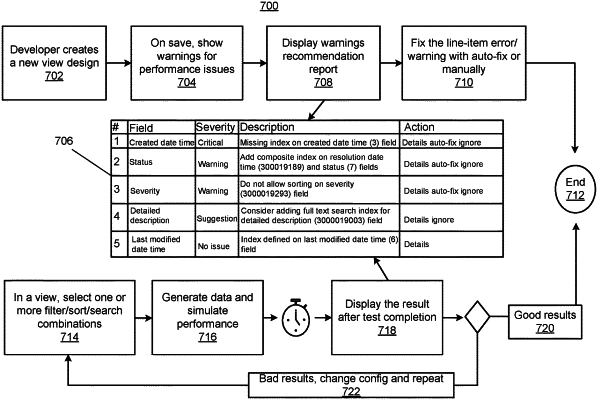| CPC G06F 8/38 (2013.01) [G06F 8/33 (2013.01); G06F 16/211 (2019.01); G06F 16/217 (2019.01); G06F 16/22 (2019.01); G06F 16/2228 (2019.01); G06F 16/245 (2019.01); G06F 16/2453 (2019.01); G06F 16/24542 (2019.01); G06F 16/24549 (2019.01); G06F 16/284 (2019.01); G06F 16/3338 (2019.01)] | 21 Claims |

|
1. A computer-implemented method for identifying performance issues and recommending actions during design-time application development, the computer-implemented method comprising:
receiving a design-time user interface (UI) of an application that enables display and manipulation of data from a database, the design-time UI having a plurality of fields associated with the data from the database, the plurality of fields including one or more types of fields;
responsive to receiving a trigger, iterating through the plurality of fields in the design-time UI by applying one or more rules related to the types of fields and cardinality of the data from the database;
generating one or more recommendations for one or more of the fields of the design-time UI based on the applied rules to the plurality of fields;
outputting the recommendations to a display;
using the recommendations to change the design-time UI without user input;
generating random data based on the types of fields from the database, the random data being different than the data from the database;
iterating through the plurality of fields in the changed design-time UI by applying the one or more rules related to the types of fields and cardinality of the random data;
generating one or more updated recommendations for one or more of the fields of the design-time UI based on the applied rules to the plurality of fields; and
outputting the updated recommendations to the display.
|